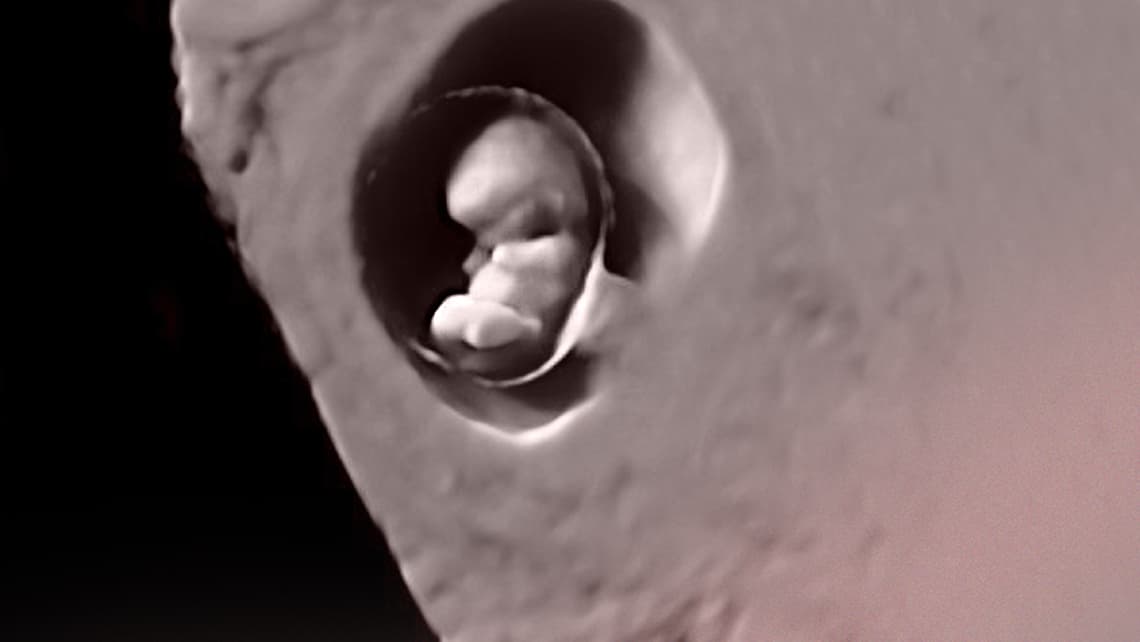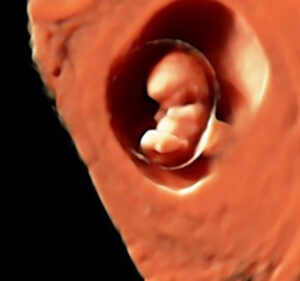
Implantation failure and repeated miscarriage. Treatment options
Successfully treating implantation failure and recurrent pregnancy loss is undoubtedly a challenge for doctors and for patients.
It is an area on which we continuously focus research at Instituto Bernabeu and, whilst we are far from finding a solution to all problems, the number of couples we are able to successfully treat is forever increasing.
An approach which does not take all 3 parties into account – the female, the male and the embryo – is incomplete. When evaluation only takes the couple into account, the reason behind the issue is only determined in under 20% of all cases.
An implantation failure or recurrent pregnancy loss study should begin by gathering thorough and detailed clinical data starting with family background, an interview of each member of the couple, an analysis of work or environmental exposure to toxins and a lifestyle evaluation. This is prior to getting into more specific aspects such as a sperm analysis, an analysis of the uterus, a study of the immune system and other tests which we will now cover.
Índice
GENETICS IN IMPLANATION FAILURE
Genetics plays a essential role within multidisciplinary research. Genetic tests can identify the cause of reproductive issues. By using the most advanced diagnosis techniques, such as DNA arrays and next-generation sequencing, when studying the couple or the embryo, we can offer our patients personalised treatment and achieve the birth of a healthy child. Before transfer, we are able to determine if the embryo is a carrier of chromosomal abnormalities which may lead to either pregnancy loss or severe malformations.
As part of our continuous commitment to R&D, we constantly work to develop genetic panels to analyse common problems, which allows us to orient each treatment, offering appropriate genetic counselling to our patients:
- Through the IBgen RIF Test we analyse the gene variants related with thrombotic risk and immunological and endometrial receptivity factors. All of this gives us the opportunity to offer a specific diagnosis and improve the prognosis of patients with this problem.
- With the NGS Panel for repeated miscarriage we can analyse 69 genes to discover whether there are genetic mutations which may be causing these pregnancy losses.
- Through the Embryo Developmental Block Genetic Panel we examine whether there is a genetic origin in cases where development of the embryo is blocked, in the laboratory during IVF. This panel studies 39 genes associated with embryogenesis to ascertain whether inactivation of the genes related with embryo development has caused it to be blocked.
SPECIALISED ULTRASOUNDS
As our research, which has been published in prestigious specialist magazines, has shown, subendometrial vascularisation, endometrial cavity volume or uterine contractions on the day of embryo transfer can provide essential information in patients suffering from implantation failure and recurrent pregnancy loss.
At Instituto Bernabeu, we have high-resolution ultrasounds which, when combined with powerful software tools, provide a highly detailed study of the uterine cavity and, in particular, of a little-understood illness – adenomyosis – which is linked to an increased risk of pregnancy loss and implantation failure.
SPERM MEIOSIS
Should we detect abnormal parameters in semen that are potentially the reason for implantation failure or recurrent pregnancy loss, the gynaecologist may determine that a meiosis analysis in samples of ejaculate or a sample obtained from a testicular biopsy is necessary. Results help to ensure that the most suitable decision regarding reproduction can be taken.
The cells that create spermatozoa divide their genetic load and change from 46 chromosomes to 23. If, during this process called meiosis, there are abnormalities that can affect the spermatozoon’s chromosomal make-up, this can cause failures in fertilisation, abnormalities in embryo development, issues during implantation and spontaneous pregnancy loss.
SPECIFIC COVERAGE FROM THE REPRODUCTION LABORATORY
Cases of this kind are extremely complex. Therefore, our in vitro fertilisation laboratory concentrates specifically on the embryo and carries out numerous lines of research in order to increase potential for implanting in the mother’s uterus. We have four main lines of activity.
- The first consists of ensuring optimum nutrition for the embryo during development as well as improving cultivation conditions in special incubators which are specific to each patient.
- Secondly, understanding the chromosome level in the embryo using PGS/PGT-A/CCS means we are able to select embryos which are free of chromosome abnormalities.
This is of utmost importance since it is essential to take into account that most cases of implantation failure and/or pregnancy loss are due to a chromosome abnormality in the embryo. A biopsy carried out on the outer layer of the embryo on day 5 or 6 of cultivation and an evaluation using advanced molecular biology and genetics techniques (fundamentally, next-generation sequencing), means we are able to do screening with the very best guarantees. This eliminates the risks undertaken during embryo biopsies and reduces the possibility of error in the diagnosis to the bare minimum.
- In third place, and whilst it is a matter of continuous controversy, an opening in the zona pellucida (or outer layer) of the embryo using laser pulses improves implantation in some very special cases. This technique is known as assisted zona hatching.
- In some cases, a fourth course of action is contemplated: freezing all the embryos and, rather than transferring them in the same cycle as the one during which they are obtained, doing it later on. This may be during a spontaneous cycle or with pharmacological assistance. This helps the endometrium, which is free of stimulating drugs, to have characteristics which are as similar as possible to those in a natural cycle, thus making it more receptive. Embryo survival rates following defrosting are very nearly 100%.

There are other future options which we are currently developing but mainly from a research point of view. One of them is the development of embryonic genetic expression patterns, or the transcriptome. It is possible that embryo environmental and biological factors play an important role in the transcriptome and this information may, therefore, prove to be of great use in the future.
THE ROLE OF THE UTERUS IN IMPLANTATION FAILURE AND RECURRENT PREGNANCY LOSS
Within a study, evaluating the structure and architecture of the uterine cavity is essential. The best test for this is a hysteroscopy which consists of looking directly at the spot where the embryo implants. During a hysteroscopy, we often carry out an endometrial biopsy. There are two reasons for this. The first is to get an understanding of the histology of the endometrium and, at the same time, the wound (or scratch, as it is often called) will mean endometrium re-epithelialization and, in some cases, this can improve endometrium receptivity. We recently added marker CD-138 to our endometrium analysis, which makes ruling out chronic endometritis possible. This pathology is hardly ever associated with any symptoms. In other words, the patient does not experience irregular bleeding, pain, high temperatures or an abnormal vaginal discharge.
Microbiome
Our research work has led to publication of the ‘Effect of the vaginal microbiome on the pregnancy rate in women receiving assisted reproduction treatment’. We have included a genital microbiome analysis consisting of the population of different families of microorganisms present on the female genitals, combinations of which can alter the uterine environment and complicate embryo implantation.
Endometrial receptivity
The analysis can also include IBGen RIF which analyses the gene variants involved in implantation failure: thrombotic risk (Prothrombin, Factor V Leiden and MTHFR), immunity factors (IL-11 and ApoE) and factors that modulate endometrial receptivity (p53 and VEGF).
hCG and intralipids
Administration of adjuvant pharmaceutical drugs, either before or after embryo transfer, can be used to encourage embryo implantation.
- Intrauterine hCG. Infiltration into the uterine cavity of the ‘pregnancy hormone’ (human chorionic gonadotropin hormone) is performed in order to increase endometrial receptivity and as a step prior to embryo transfer.
- Intralipids. Intralipids, which are immune response modulators, are administered when transfer takes place. It is administered again when pregnancy is confirmed. The aim is to increase the implantation percentage and decrease the changes of a pregnancy loss. (Learn more)
RICH PLASMA PLATELET
A treatment that has begun to be applied as therapeutic use in very specific cases of implantation failure and women with refractory endometrium is intrauterine platelet-rich plasma (PRP). It is known that platelets have an important role in the blood coagulation process and also a great regenerative capacity. This technique uses the patient’s own blood plasma obtained from a blood sample in order to improve embryo transfer.
Recent studies focusing on the intrauterine application of platelet-rich plasma have been echoed about the capacity for tissue repair and regeneration in patients; improves endometrial receptivity and implantation in women with recurrent embryo implantation failures. Likewise, in cases of patients with refractory endometrium, to achieve the adequate volume improves thickening and thus improves the embryo nesting.
INMUNE SYSTEM
So far, Antiphospholipid syndrome is the only immune disorder that has been clearly linked to an elevated percentage of failures to reproduce. It is the most common demonstrated cause of recurrent pregnancy loss and it can be treated. The illness is characterised by the presence of the mother’s blood in some antibodies known as antiphospholipids. They cause thrombotic events in the placenta that lead to pregnancy loss. Treatment with aspirin and heparins (Clexane®, innohep®) has proven to be successful in reducing the risk of pregnancy loss.
The other main area of research in the field of reproduction immunology focuses on the cells in the immune system and NKC (Natural Killer Cells).
The treatment that is currently available aims to stop or control abnormalities in the immune system and any other abnormalities that are present.
ENDOCRINOLOGICAL STUDY
Studies of this kind ought not to be limited to the genital area. Sometimes, metabolism or endocrine disorders cause recurrent pregnancy loss and, therefore, an evaluation of this side of the problem is also part of a global study.
A personalised nutrition assessment is carried out, when necessary, in order to correct weight issues or inappropriate eating habits which may be reducing one member of the couple’s ability to reproduce or which may be negatively affecting embryo implantation and increasing pregnancy loss risk.
We also use adequate diets to try and improve certain associated illnesses such as endometriosis, amongst others, in which nutrition is an important immunomodulatory factor.
Last of all, this unit deals with the diagnosis and treatment of endocrine disorders which can co-exist. For example, diabetes, cholesterol disorders, thyroid disorders and arterial hypertension, amongst others, which affect fertility and obscure treatment results.
MULTIDISCIPLINARY ANALYSIS
Once all the tests have been carried out, they are shared with the multidisciplinary committee dealing with implantation failure. The gynaecologist in charge of the couple outlines all the information gathered and the course of treatment which may lead to a successful outcome is determined by the team.
Implantation failure and repeated miscarriage unit at Instituto Bernabeu
